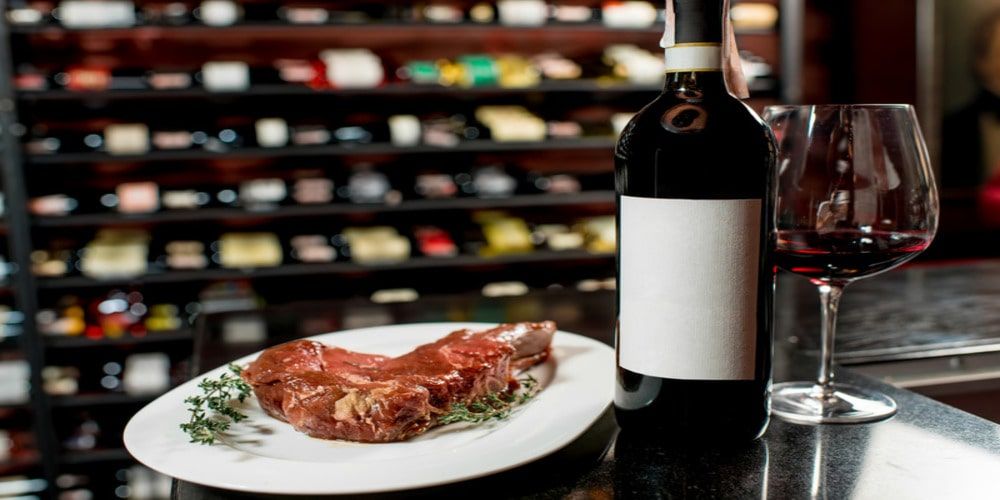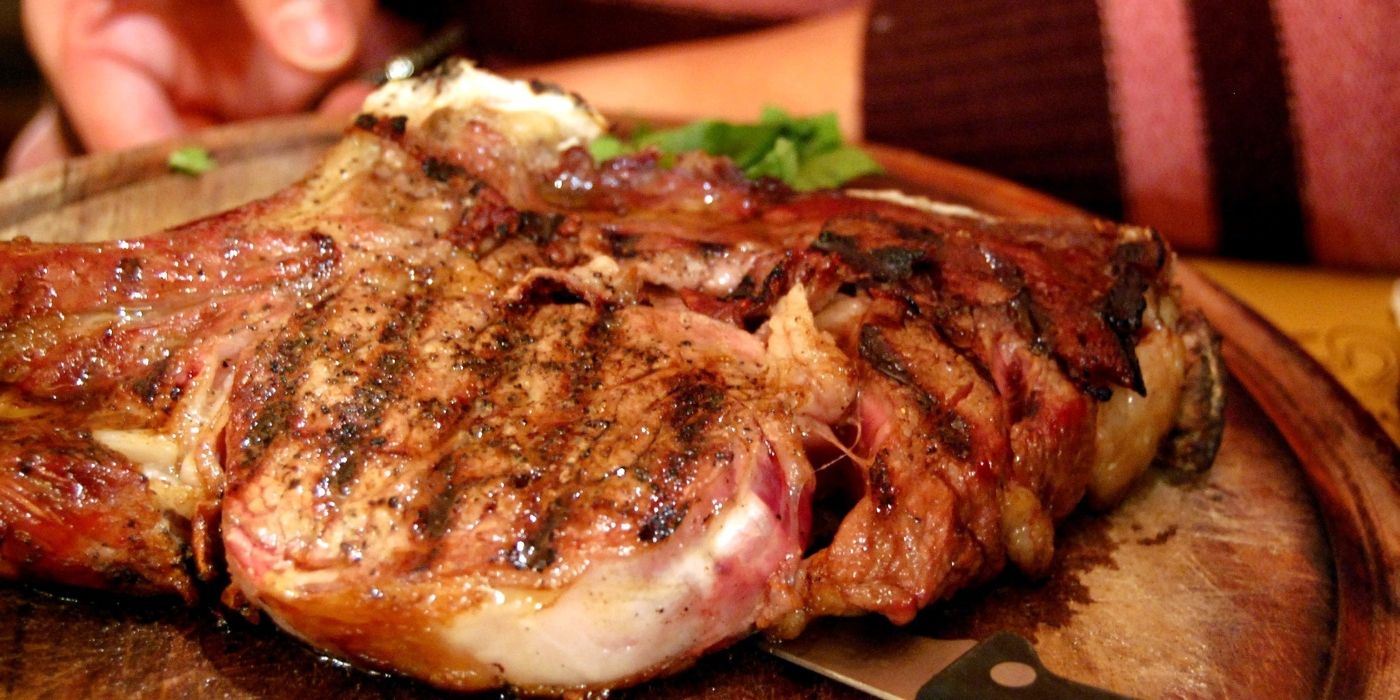In Tuscany's endless variety of recipes, there is something for everyone. From first courses with fresh pasta to fish soups, from the so-called "poor dishes" of the peasant tradition to meat delicacies, the regional tradition is a triumph of seasonal and territorial flavors and varieties.
And while visiting Florence, it is impossible not to taste an exquisite Florentine-style steak, prepared as only in the city of the Lily do.
However, with a few little tricks and some basic tricks, it is not impossible to prepare one at home for a special dinner. How to do it? Simple, just follow the tips we give below on choosing the meat, how to cook it, what side to go with it, and, of course, what kind of wine to pair with it to enhance its taste.
Just scroll down to find out how to cook a Florentine steak to endorse tradition, with all the passages to keep in mind step by step.

How to cook a Florentine steak according to the tradition

A perfect cut for a Florentine steak
The key step in figuring out how to cook a Florentine steak is to know how to prepare the barbecue. Coals must be very hot and therefore the temperature must be very high: basically, you should not get too close to the fire. Meanwhile, take the meat out of the refrigerator and dry it with paper towels.
When the fire has died down, the charcoal is red-hot and the meat is at room-temperature, put it on the grill, naturally on the bone. At this point the meat should not be moved and should be cooked for about 3-4 minutes.
After this time has elapsed, turn the steak over and do the same on the other side. When it has acquired a nice color, place it vertically, so that it rests on the bone, for 2 minutes. This step is necessary because the cut is very thick and it is essential to even out the cooking.
At this point, your steak will have acquired a nice brown color, while the fat will have golden highlights. Remove it from the grill and let it rest a few minutes on a cutting board so that the released juices will tenderize it.
Now you can add salt to taste, a pinch of black pepper and oil to massage into the meat to allow it to absorb the flavors. You may also decide to cut and serve it.
Want to know if your cooking was perfect? By making the cuts you will see that the inside has acquired the unmistakable color of rare cooking, which is a bright reddish-pink.
Serve immediately to enjoy your Florentine steak in its best form.
Buon appetito!
The origins of the Florentine steak

A cut of Florentine steak
The Florentine steak inherits a thousand-year-old tradition, which is that of barbecuing, which, according to ancient tombs found in the Orvieto area, was customary back in Etruscan times.
Of course, later, were the Florentines who made this type of cooking an art as well as a symbol.
At the time of the Medici, for example, during the feast of San Lorenzo on August 10, it was usual to cook fillets of meat on the fires of the celebration, and then distribute them to the population. It was on these occasions that English knights who were frequently in Florence began to name meat in their language, beef steak, and so the Florentines Italianized it to give it the name we know today.
Another version of the legend equally credits English people with the appellation but places the recipe in the 19th century, a time when nobles from across the Channel loved to enjoy Chianina meat cooked to perfection in Dante's city.
It is certain that the first official written record of Florentine steak is found in Pellegrino Aretusi's legendary compendium of recipes, La scienza in cucina e l'arte di mangiar bene, from 1891. Since then the technique has remained more or less the same and has been passed from parent to child in the kitchens of all Florentine taverns and restaurants.
Tips and pairings

A Florentine steak with red wine
If you want to know how to prepare an excellent T-bone steak, you should know that no detail should be left to chance.
First of all, be very careful in choosing the cut of meat. It must be a Chianina beef (aged between 12 and 24 months) of excellent quality, no less than 3 or 4 centimeters thick and including the bone. This prized breed is naturally native and is found, as its name indicates, in the Val di Chiana, between the provinces of Arezzo and Siena. The weight of the cut can vary, but for a perfect recipe it must correspond to 800 grams/1 kilo and must come from the loin of the animal to achieve the classic T shape.
It is also essential to manage the coals as well as possible, choosing charcoal from oak or holm oak ( gas barbecue is fine too, but wood will provide the right aroma) and keeping an eye on the cooking constantly. If you have a thermometer, don't be afraid to use it and keep in mind that around 48° you will get a very rare Florentine steak and that at 52-55° you will have reached the ideal point.
To enhance the flavors of your meat, remember to select a good side dish, such as classic baked potatoes, a nice salad with tomatoes, or, for a 100% Tuscan meal, delicious beans all'uccelletto.
Finally, don't forget a good wine, which allows you to emphasize the flavor and savoriness of the meat: opt for a full-bodied, strong red, such as the classic Chianti, a Montepulciano d'Abruzzo or an Aglianico del Volture.
Where to eat a Florentine steak in Italy?
At this point you perfectly know how to cook a genuine and juicy Florentine steak, but if you wish to eat one comfortably seated at the table? First, you cannot go anywhere else in the world but Florence, of course.
Second, you'll have to choose a place that prepares it according to tradition and taking care: the right choice is the Museo della Bistecca - whose name is certainly not accidental.
At the Museo della Bistecca, in the heart of the city, you will have a first-class gastronomic experience, a sensory journey to discover the flavors of meat, which will make you experience the specialties of Tuscan cuisine combined with the artistic atmosphere of a museum, matching the wonders of the cradle of the Renaissance.
You will be surrounded by original works of art as you enjoy a tender and tasty steak, prepared as the whole world envies us.
About the author
Written on 09/05/2023




Denise Penna
Want to discover the secrets of the real Florentine steak and its preparation? Keep reading if you want to make your Tuscan (and other) guests happy